Tribological Effects of Martian Regoliths on Stainless Steel with Natural and Composite Lip Seal and Packing Materials
Abstract
1. Introduction
2. Materials and Methods
2.1. Materials
2.2. Test and Analysis Methods
2.3. Regression Model
3. Results and Discussion
3.1. On-Line Friction
3.1.1. Block-Type (Ln, Lc) Pins
3.1.2. Braided (Pn, Pc) Pins
3.2. On-Line Wear
3.2.1. On-Line Wear of Block-Type (Ln, Lc) Pins
3.2.2. On-Line Wear of Braided (Pn, Pc) Pins
3.3. Surface Analyses
3.4. Regression Model Results
4. Conclusions
- The coefficient of friction of the tribosystem stabilized at a typically high value of 0.3 to 0.6 for all systems, except for the hybrid composite braided packing sealant, when the frictional resistance continuously increased due to the ingress of the regolith and the fractions of the detached sealing of the secondary braided assembly.
- The abrasive effect of the Martian regolith depended primarily on the type of sealant and much less on the type of regolith simulant. In the case of the block-type sealants, the disc part, while, in the case of the braided sealants, the sealant part of the tribopair was more affected by the abrasive effect of the regolith. For the block sealants, the regoliths showed only small particle incorporation at the conclusion of the run-in period, which resulted in a low-slope, nearly horizontal, wear curve with no measurable significant wear. The braided packing materials were prone to disintegration during the abrasive test. Thus, it is not possible to speak about the real wear curves. Apparent wear occurred due to the dynamic effects of the regolith powders in the contact zone and the disintegration of the pin specimens.
- In designing any tribosystems for the Martian environment, it must be kept in mind that block-type sealants perform better as compared to any braided packings, while there is negligible difference between the different block-type pins.
Supplementary Materials
Author Contributions
Funding
Data Availability Statement
Acknowledgments
Conflicts of Interest
References
- Karl, D.; Cannon, K.M.; Gurlo, A. Review of Space Resources Processing for Mars Missions: Martian Simulants, Regolith Bonding Concepts and Additive Manufacturing. Open Ceram. 2022, 9, 100216. [Google Scholar] [CrossRef]
- Delage, P.; Karakostas, F.; Dhemaied, A.; Belmokhtar, M.; Lognonné, P.; Golombek, M.; De Laure, E.; Hurst, K.; Dupla, J.-C.; Kedar, S.; et al. An Investigation of the Mechanical Properties of Some Martian Regolith Simulants with Respect to the Surface Properties at the InSight Mission Landing Site. Space Sci. Rev. 2017, 211, 191–213. [Google Scholar] [CrossRef]
- Hill, E.; Mellin, M.J.; Deane, B.; Liu, Y.; Taylor, L.A. Apollo Sample 70051 and High- and low-Ti Lunar Soil Simulants MLS-1A and JSC-1A: Implications for Future Lunar Exploration. J. Geophys. Res. Planets 2007, 112, E02006. [Google Scholar] [CrossRef]
- Rickman, D.; Street, K.W.; El-Genk, M.S. Some Expected Mechanical Characteristics of Lunar Dust: A Geological View. In Proceedings of the AIP Conference Proceedings, Albuquerque, NM, USA, 11–15 February 2007. [Google Scholar]
- Colwell, J.E.; Batiste, S.; Horányi, M.; Robertson, S.; Sture, S. Lunar Surface: Dust Dynamics and Regolith Mechanics. Rev. Geophys. 2007, 45, RG2006. [Google Scholar] [CrossRef]
- Calle, C.; Buhler, C.; Johansen, M.; Hogue, M.; Snyder, S. Active dust control and mitigation technology for lunar and Martian exploration. Acta Astronaut. 2011, 69, 1082–1088. [Google Scholar] [CrossRef]
- Mpagazehe, J.N.; Street, K.W., Jr.; Delgado, I.R.; Higgs, C.F., III. An experimental study of lunar dust erosive wear potential using the JSC-1AF lunar dust simulant. Wear 2014, 316, 79–91. [Google Scholar] [CrossRef]
- Buehler, C.A. Experimental investigation of lunar dust impact wear. Wear 2015, 342, 244–251. [Google Scholar] [CrossRef]
- Sengupta, A.; Kulleck, J.; Van Norman, J.; Mehta, M. Thermal coating erosion in a simulated Martian landing environment. Wear 2011, 270, 335–343. [Google Scholar] [CrossRef]
- Ferguson, D.C.; Kolecki, J.C.; Siebert, M.W.; Wilt, D.M.; Matijevic, J.R. Evidence for Martian electrostatic charging and abrasive wheel wear from the Wheel Abrasion Experiment on the Pathfinder Sojourner rover. J. Geophys. Res. 1999, 104, 8747–8759. [Google Scholar] [CrossRef]
- Liu, Y.; Zhang, L.; Tian, Y.; Zhang, W.; Tang, J.; Zhang, J.; Duan, Z.; Ji, J. Design and Experimental Study of a Drilling Tool for Mars Rock Sampling. Aerospace 2024, 11, 272. [Google Scholar] [CrossRef]
- Kalácska, Á.; Parmentier, V.; De Baets, P.; Kalácska, G. Wear investigation of PTFE, PEEK and UHMWPE-based reciprocating shaft seal materials with lunar/Martian regolith simulants. Wear, 2025, in press. [CrossRef]
- Mucha, K. Application of Rock Abrasiveness and Rock Abrasivity Test Methods—A Review. Sustainability 2023, 15, 11243. [Google Scholar] [CrossRef]
- Grün, J.; Feldmeth, S.; Bauer, F. Wear on radial lip seals: A numerical study of the influence on the sealing mechanism. Wear 2021, 476, 203674. [Google Scholar] [CrossRef]
- Wang, H.; Yue, Y.; Cui, Y.; Qiu, X.; Li, C. Wear on radial lip seals: A numerical study of the influence on the sealing mechanism. Lubricants 2024, 12, 442. [Google Scholar] [CrossRef]
- Liu, D.; Wang, S.; Zhang, C. A multiscale wear simulation method for rotary lip seal under mixed lubricating conditions. Tribol. Int. 2018, 121, 190–203. [Google Scholar] [CrossRef]
- Exolith Lab MGS-1 Lunar Highlands Simulant. Available online: https://spaceresourcetech.com/collections/martian-simulants/products/mgs-1-mars-global-simulant (accessed on 20 August 2024).
- Exolith Lab JEZ-1 Lunar Highlands Simulant. Available online: https://spaceresourcetech.com/collections/martian-simulants/products/jez-1-jezero-delta-simulant (accessed on 20 August 2024).
- Barkó, G.; Kalácska, G.; Bálint, T.; Sarankó, Á.; Kalácska, Á.; Ryszawa, E.; Székely, L.; Károly, Z. Abrasion Behaviour of Natural and Composite Polytetrafluoroethylene Seal Materials Against Stainless Steel in Lunar Regolith Conditions. Lubricants 2025, 13, 43. [Google Scholar] [CrossRef]
- DIN 50322 Category VI; Code for Wear—Classification of Categories in Wear Testing. German Institute for Standardization: Berlin, Germany, 1986.
- Kalácska, G.; Barkó, G.; Shegawu, H.; Kalácska, Á.; Zsidai, L.; Keresztes, R.; Károly, Z. The Abrasive Effect of Moon and Mars Regolith Simulants on Stainless Steel Rotating Shaft and Polytetrafluoroethylene Sealing Material Pairs. Materials 2024, 17, 4240. [Google Scholar] [CrossRef] [PubMed]
- Kato, K.; Adachi, K. Wear Mechanisms. In Modern Tribology Handbook; CRC Press: Boca Raton, FL, USA, 2001; pp. 273–300. [Google Scholar]
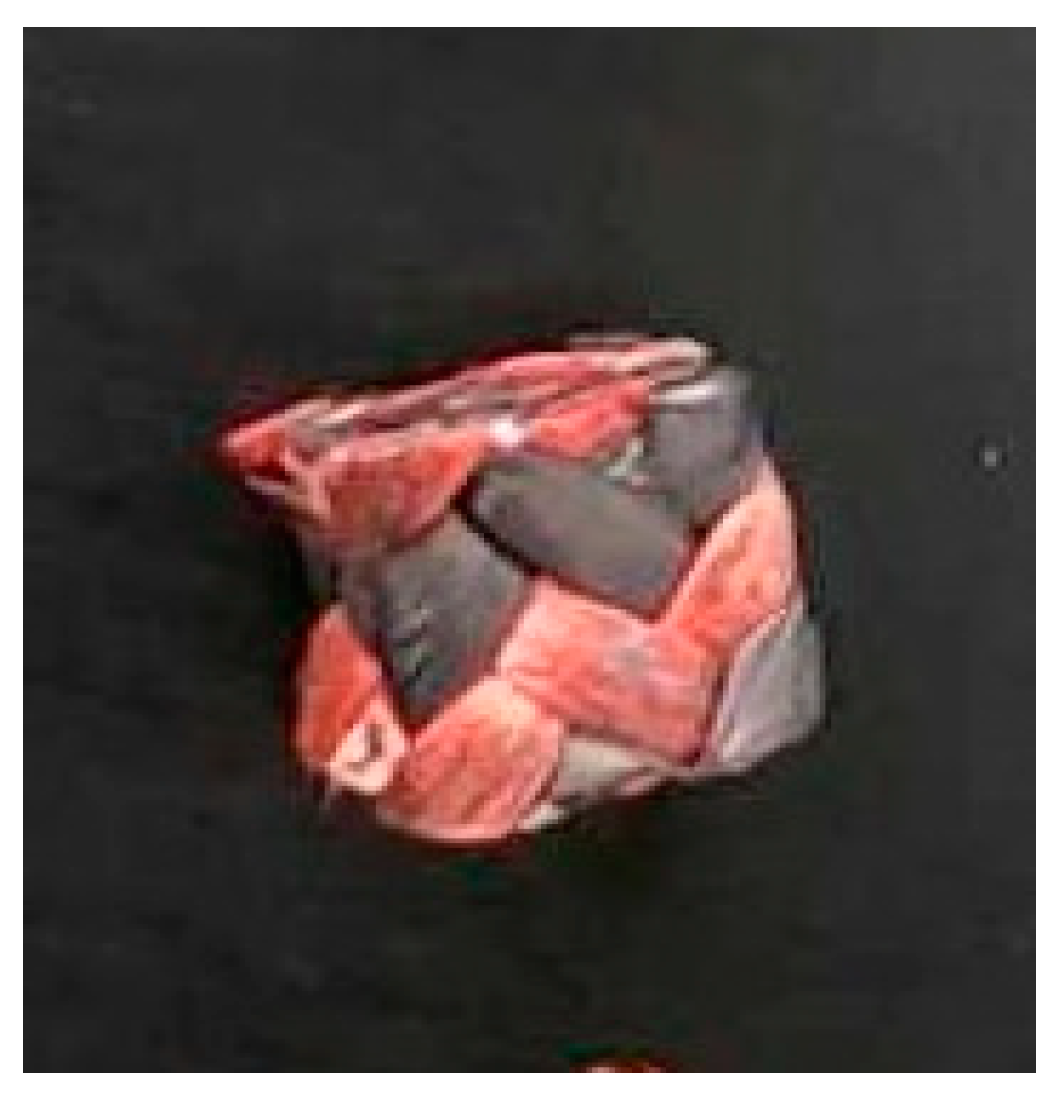
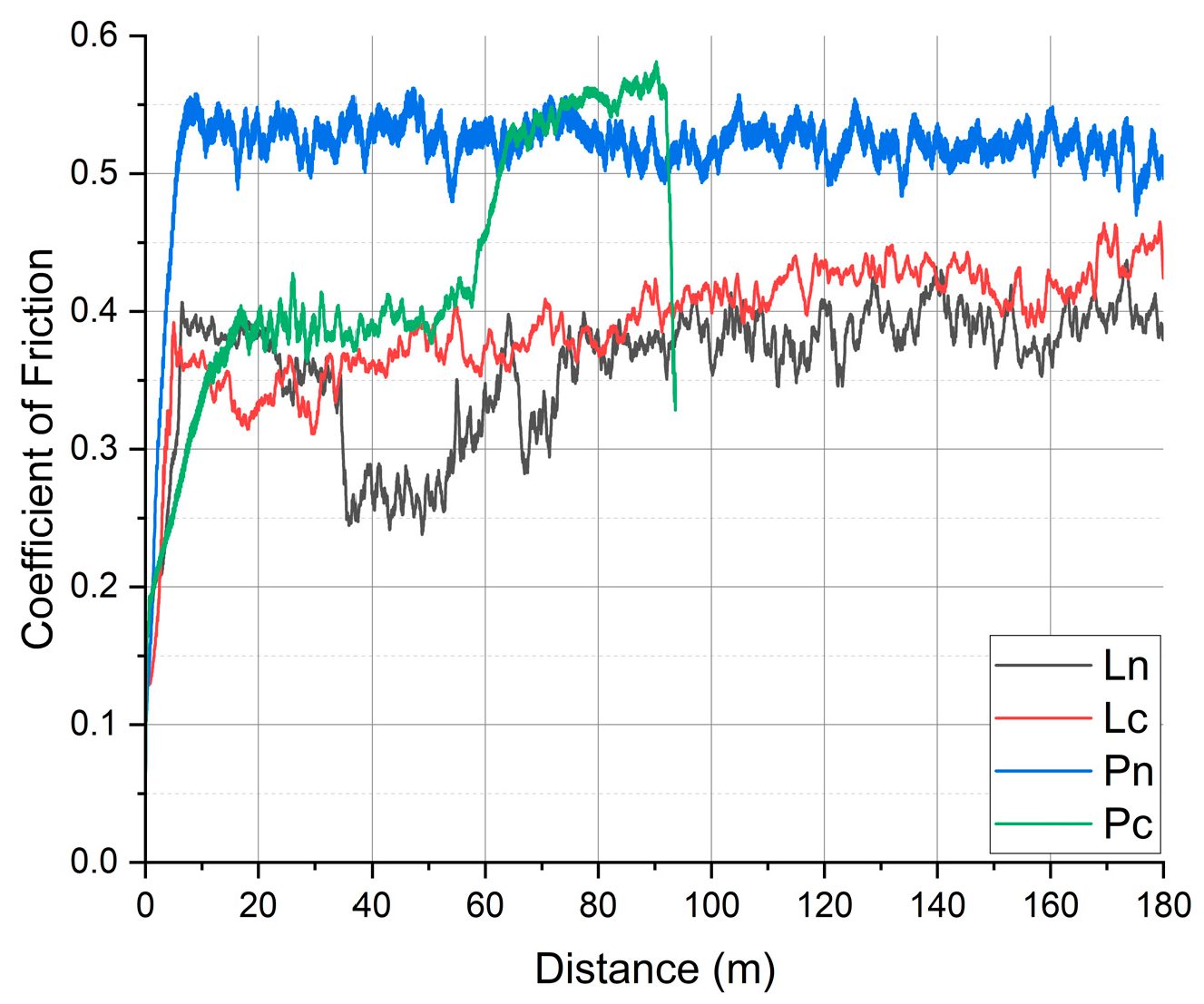
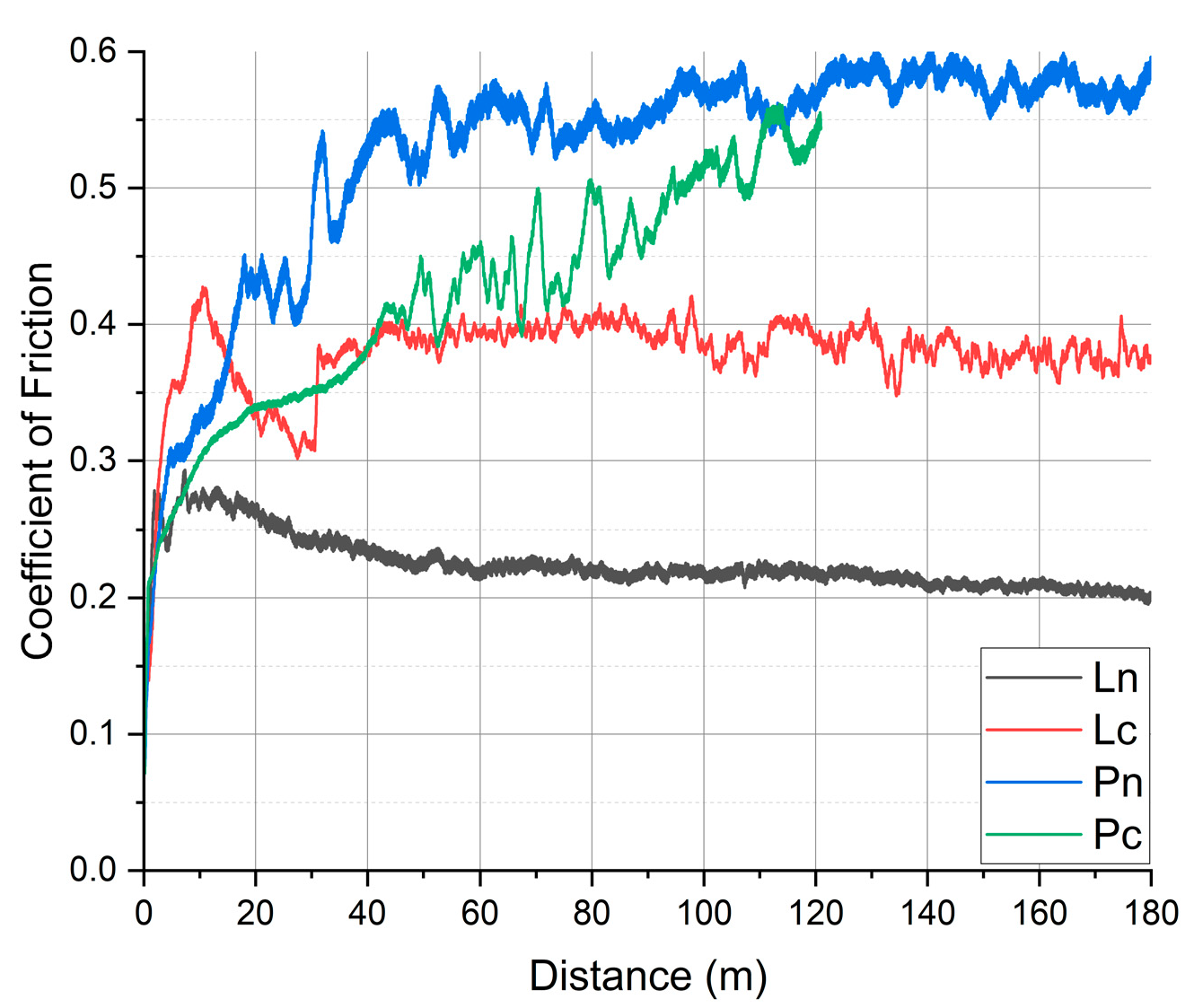
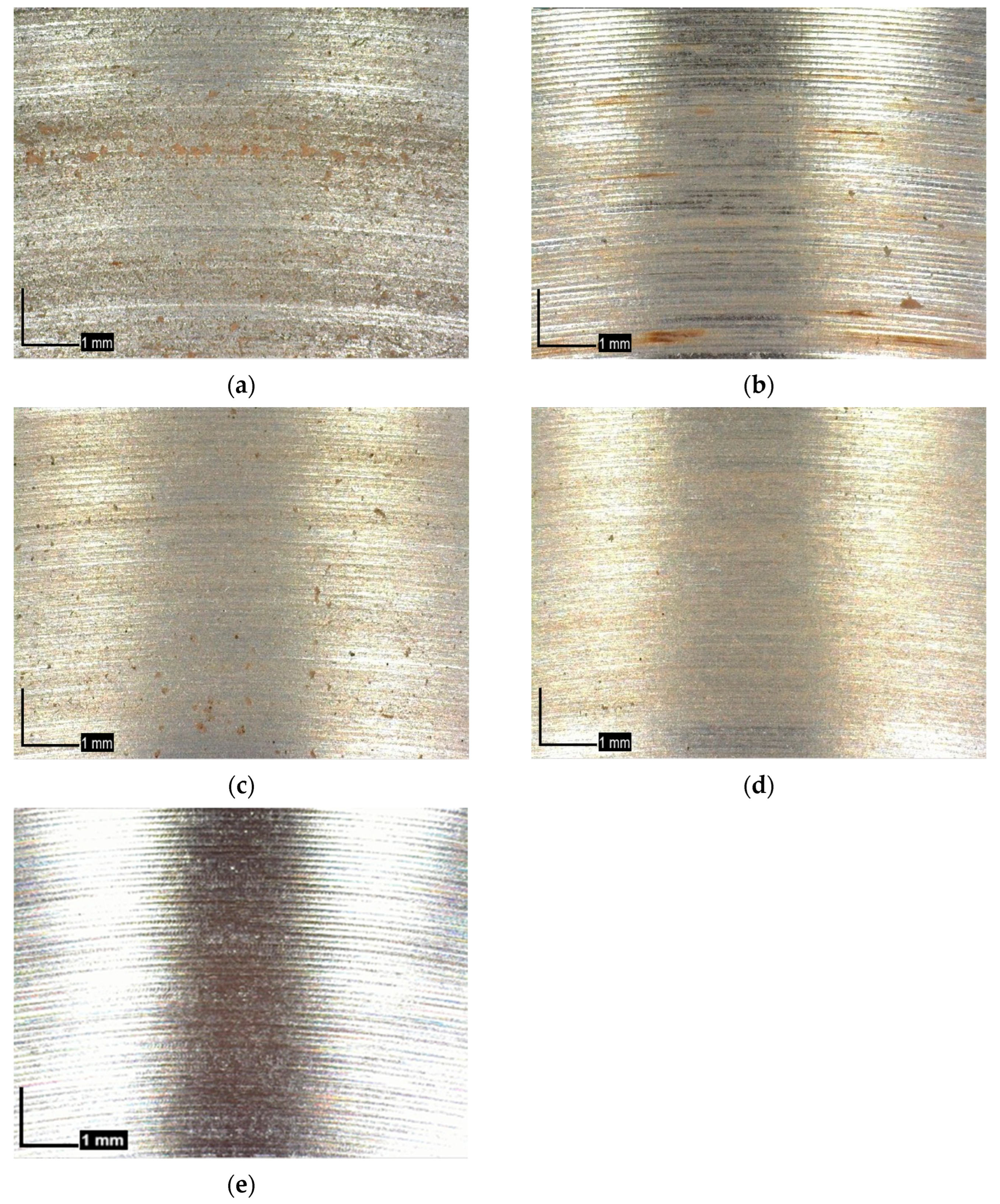
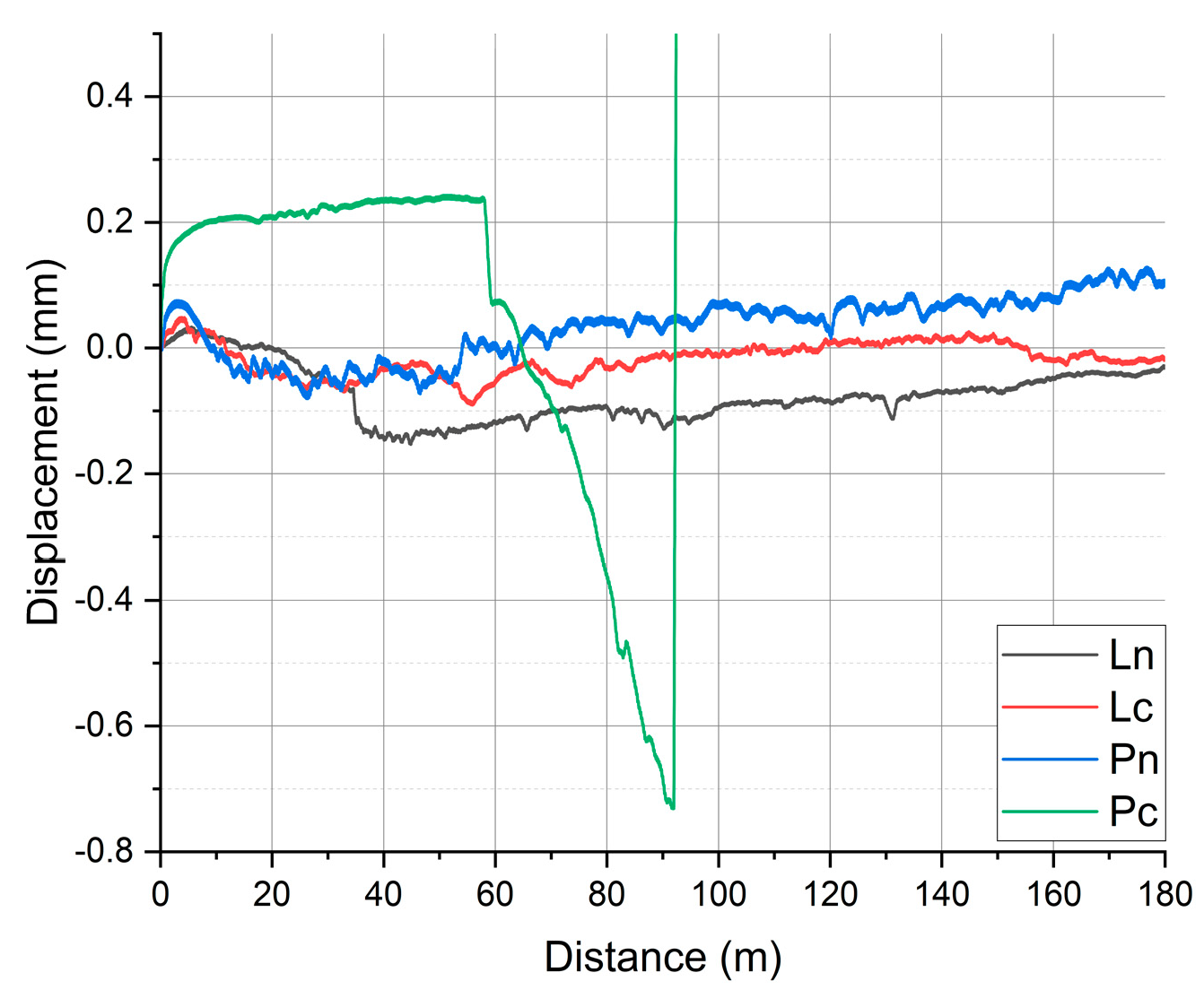
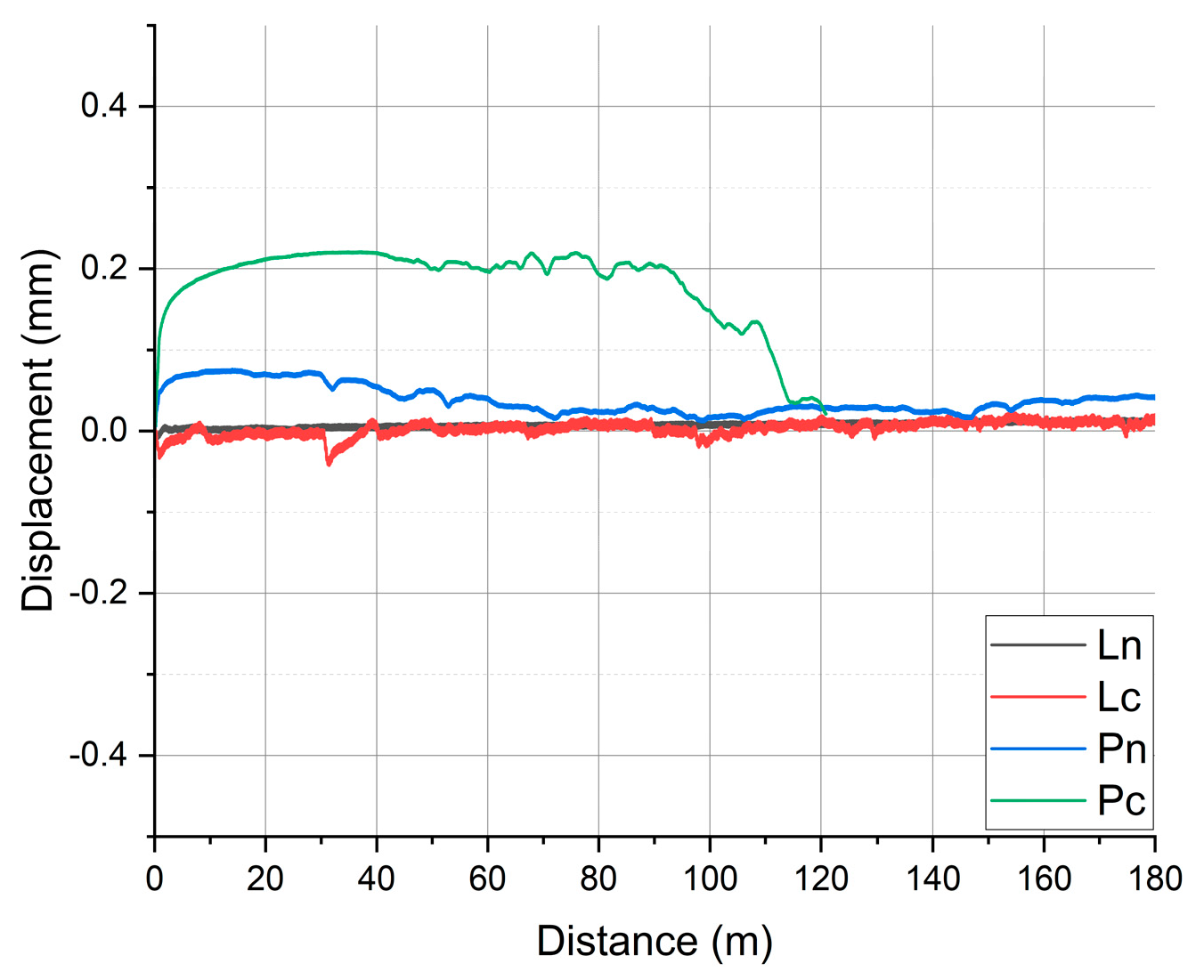
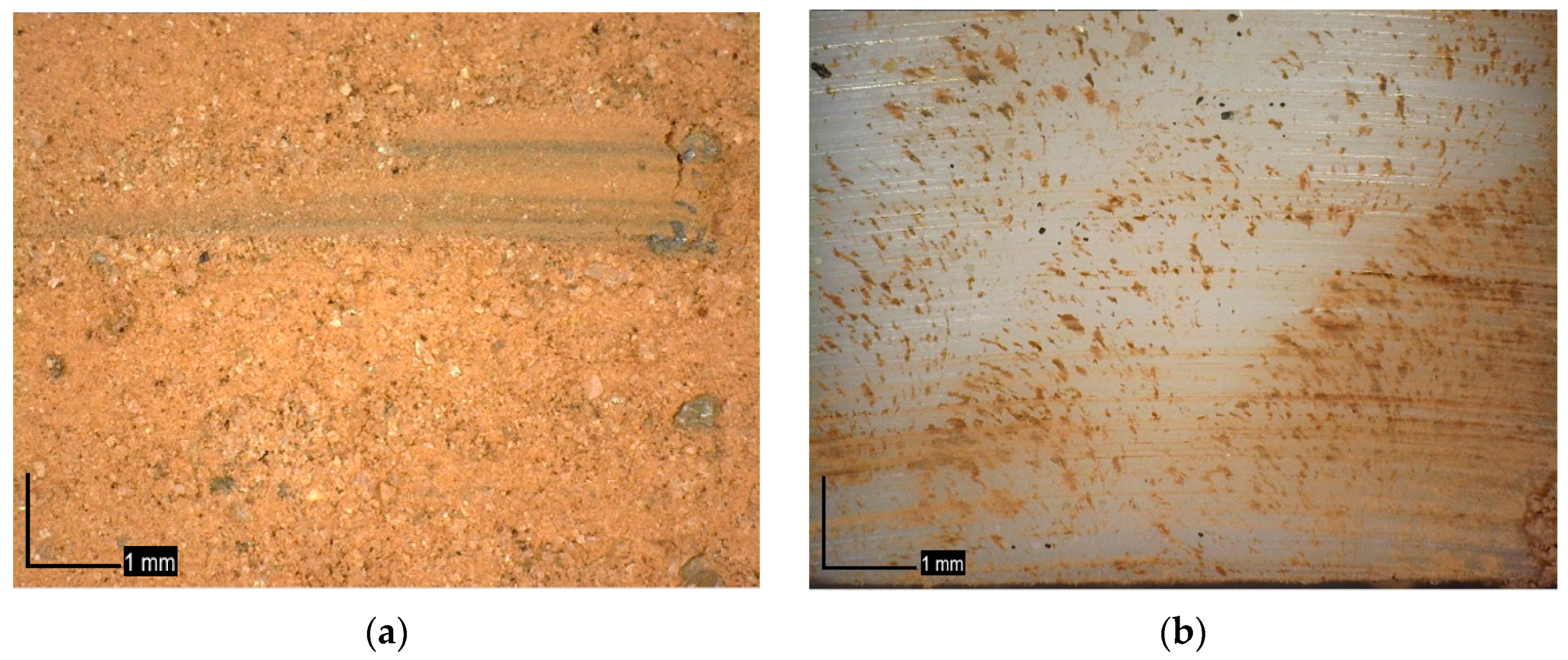
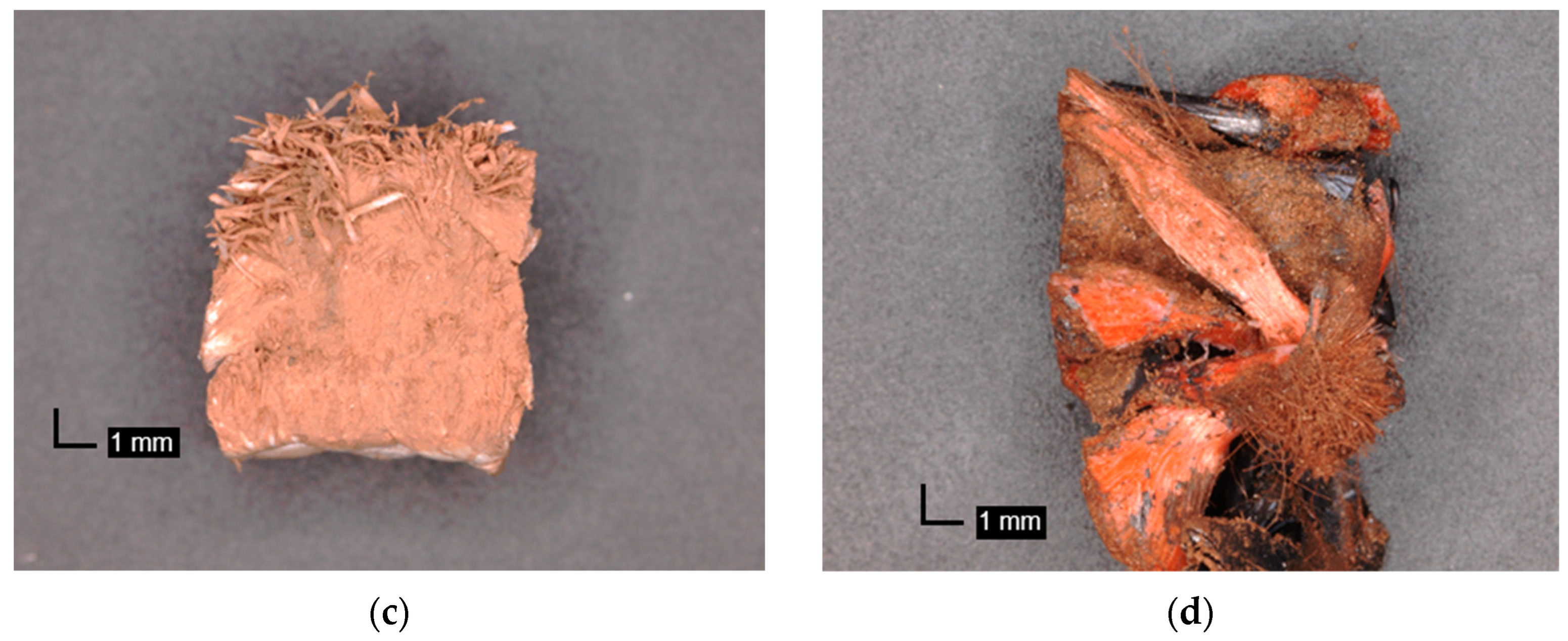
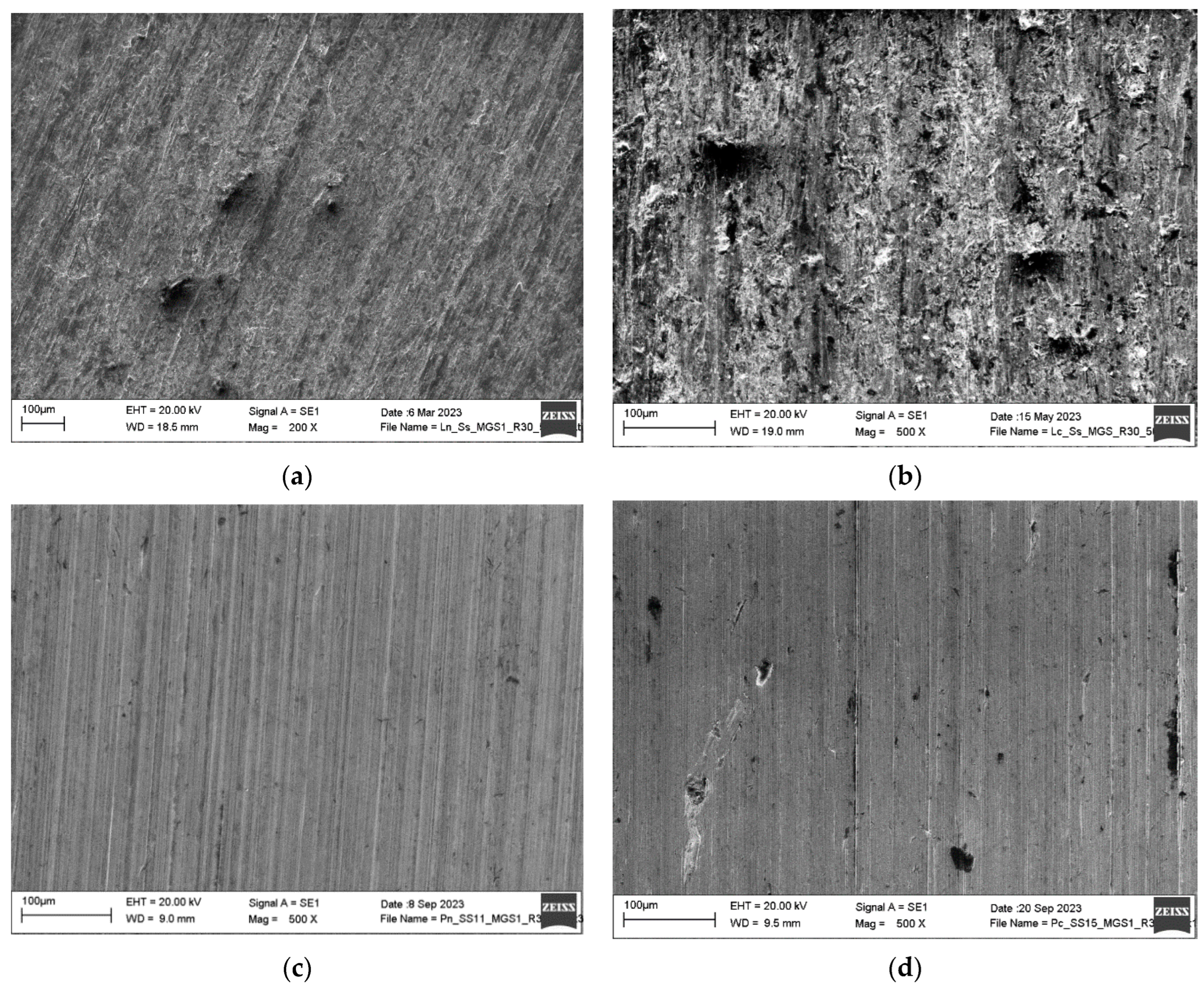

| Regolith Simulants | Mineral Phases | MGS-1 | JEZ-1 |
|---|---|---|---|
| Martian Global | Jezero Delta Simulant | ||
| Phase composition | Anorthosite | 27.1% | 16.0% |
| Glass-rich basalt | 22.9 % | 13.5 % | |
| Pyroxene | 20.3% | 12.0% | |
| Olivine | 13.7% | 32.0% | |
| Mg-sulphate | 4.0% | 2.4% | |
| Ferrihydrite | 3.5% | 2.1% | |
| Hydrated silica | 3.0% | 1.8% | |
| Magnetite | 1.9% | 1.1% | |
| Anhydrite | 1.7% | 1.0% | |
| Fe-carbonate 1.4% | 1.4% | - | |
| Mg-carbonate | - | 11.0 | |
| Smectite | - | 6.0 | |
| Physical properties | Bulk density (g/cm3): | 1.29 | 1.54 |
| Median particle size (μm): | 60 | 60 | |
| Particle size range (μm): | >0.04–600 | <0.04–500 | |
| Reference | [17] | [18] |
| Pin/Simulant | Sa | Sz | Sq | Ssk | Sku | |||||
|---|---|---|---|---|---|---|---|---|---|---|
| Before | After | Before | After | Before | After | Before | After | Before | After | |
| Ln/MGS-1 | 1.02 | 0.70 | 171.64 | 14.13 | 1.85 | 0.89 | 3.65 | −0.32 | 179.34 | 4.31 |
| Ln/JEZ-1 | 1.02 | 0.71 | 166.87 | 9.32 | 1.92 | 0.88 | 3.82 | 0.09 | 185.56 | 2.80 |
| Lc/MGS-1 | 1.01 | 0.68 | 171.11 | 15.30 | 1.87 | 0.85 | 0.18 | −0.05 | 178.54 | 3.32 |
| Lc/JEZ-1 | 1.04 | 0.71 | 185.15 | 14.66 | 2.84 | 0.90 | 3.11 | 0.01 | 194.42 | 3.06 |
| Pn/MGS-1 | 0.92 | 0.74 | 127.11 | 9.26 | 1.41 | 0.79 | 3.55 | −0.05 | 149.75 | 2.91 |
| Pn/JEZ-1 | 0.98 | 0.66 | 126.22 | 9.01 | 1.28 | 0.82 | 3.02 | 0.02 | 141.56 | 2.70 |
| Pc/MGS-1 | 1.08 | 0.79 | 162.77 | 86.50 | 1.90 | 1.00 | 2.71 | −0.01 | 170.04 | 41.30 |
| Pc/JEZ-1 | 0.99 | 0.70 | 133.12 | 42.44 | 1.55 | 0.90 | 3.01 | 0.01 | 178.08 | 52.08 |
| Dp, (Rz/0.5Rsm) | Martian Simulant | Test Period (min) | |||
|---|---|---|---|---|---|
| 2 | 6 | 15 | 30 | ||
| Ln pin | MGS-1 | 0.046 | 0.039 | 0.047 | 0.041 |
| JEZ-1 | 0.058 | 0.056 | 0.050 | 0.048 | |
| Lc pin | MGS-1 | 0.061 | 0.055 | 0.042 | 0.043 |
| JEZ-1 | 0.058 | 0.061 | 0.051 | 0.059 | |
| Pn pin | MGS-1 | 0.042 | 0.041 | 0.039 | 0.038 |
| JEZ-1 | 0.038 | 0.036 | 0.044 | 0.041 | |
| Pc pin | MGS-1 | 0.050 | 0.053 | 0.034 | 0.028 |
| JEZ-1 | 0.025 | 0.025 | 0.062 | 0.057 | |
| Dp, (Rz/0.5Rsm) | Martian Simulant | Test Period (min) | |||
|---|---|---|---|---|---|
| 2 | 6 | 15 | 30 | ||
| Ln pin | MGS-1 | 0.214 | 0.223 | 0.229 | 0.205 |
| JEZ-1 | 0.142 | 0.128 | 0.165 | 0.158 | |
| Lc pin | MGS-1 | 0.179 | 0.242 | 0.268 | 0.305 |
| JEZ-1 | 0.124 | 0.115 | 0.298 | 0.165 | |
| Pin | Dominant Regolith Size * | Model Equation | R2 | Coefficient of d | Coefficient of PRx |
|---|---|---|---|---|---|
| Ln | PR400 | wear = 2.706 + 0.0003d − 100.396 PR400 CoF = −3.576 + 0.0001d − 139.356 PR400 | 0.922 0.849 | 0.255 0.085 | −0.962 0.906 |
| Lc | PR400 PR1000 | wear = 0.209 + 0.0001d − 8.044 PR400 CoF = 0.441 − 0.00006d − 2.361 PR1000 | 0.4 0.569 | 0.514 −0.12 | −0.402 −0.752 |
| Pn | PR200 | wear = −0.884 + 0.002d + 4.276 PR200 CoF = 0.373 + 0.00008d − 0.888 PR200 | 0.517 0.74 | 0.709 0.142 | −0.202 0.835 |
| Pc | PR125 | wear = 1.501 − 0.001d − 3.818 PR125 CoF = 0.37 + 0.001d | 0.555 0.926 | −0.701 0.663 | −0.088 - |
Disclaimer/Publisher’s Note: The statements, opinions and data contained in all publications are solely those of the individual author(s) and contributor(s) and not of MDPI and/or the editor(s). MDPI and/or the editor(s) disclaim responsibility for any injury to people or property resulting from any ideas, methods, instructions or products referred to in the content. |
© 2025 by the authors. Licensee MDPI, Basel, Switzerland. This article is an open access article distributed under the terms and conditions of the Creative Commons Attribution (CC BY) license (https://creativecommons.org/licenses/by/4.0/).
Share and Cite
Kalácska, G.; Barkó, G.; Bálint, T.; Keresztes, R.; Székely, L.; Károly, Z. Tribological Effects of Martian Regoliths on Stainless Steel with Natural and Composite Lip Seal and Packing Materials. Lubricants 2025, 13, 136. https://doi.org/10.3390/lubricants13040136
Kalácska G, Barkó G, Bálint T, Keresztes R, Székely L, Károly Z. Tribological Effects of Martian Regoliths on Stainless Steel with Natural and Composite Lip Seal and Packing Materials. Lubricants. 2025; 13(4):136. https://doi.org/10.3390/lubricants13040136
Chicago/Turabian StyleKalácska, Gábor, György Barkó, Tamás Bálint, Róbert Keresztes, László Székely, and Zoltán Károly. 2025. "Tribological Effects of Martian Regoliths on Stainless Steel with Natural and Composite Lip Seal and Packing Materials" Lubricants 13, no. 4: 136. https://doi.org/10.3390/lubricants13040136
APA StyleKalácska, G., Barkó, G., Bálint, T., Keresztes, R., Székely, L., & Károly, Z. (2025). Tribological Effects of Martian Regoliths on Stainless Steel with Natural and Composite Lip Seal and Packing Materials. Lubricants, 13(4), 136. https://doi.org/10.3390/lubricants13040136





